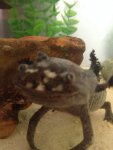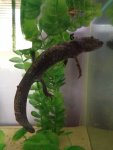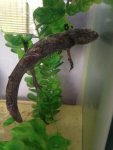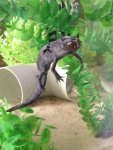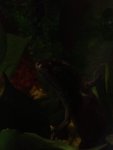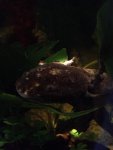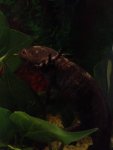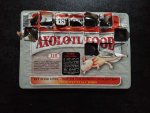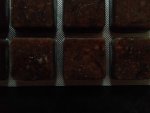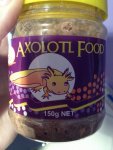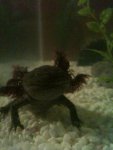Sorry for the delay, internets been spotty.
Treating the water I put in some "Complete water treatment" manufactured by Aquarium Science, and neutralises ammonia, chloramine and chlorine. The people at my pet store said that it was ok to use, but they also said pebbles were a good substrate so if it's bad for him I won't use it anymore.
He does have a growth on his head, as well as his tail (more visible in the pictures this time), they started growing a couple of months ago. The tail one grew first, and since he already has more toes than he should, I just assumed it was related to that, but the one on his head is worrying. I'd take him to a vet, but I don't think they look at aquatic animals
I feed him one cube of frozen axolotl food a day, usually at night time, although in winter he might eat less because it gets colder. He's 3 years old now, if that changes how much he needs to eat. I tried to swap to floating pellets for variety, but he had trouble eating them (The pellets floated on the top, and he only noticed them if they sunk past his mouth). Should I be feeding him more often?
With the filter, I place a plant in front of it to muffle the water flow, as well as keep it on the lowest setting, but it could still be causing stress. The nitrate reading was about 20-30 ppm (didn't notice i'd forgotten to add it in, sorry), I think it's so high because about a month ago or so I swapped my substrate out for sand and I've been having trouble cleaning it without losing it all.
The first 3 pictures are what he looks like today, while the last 3 are from october last year to give a comparison of how he has changed (sorry about how dark the old ones are). he didn't have any growths then.

